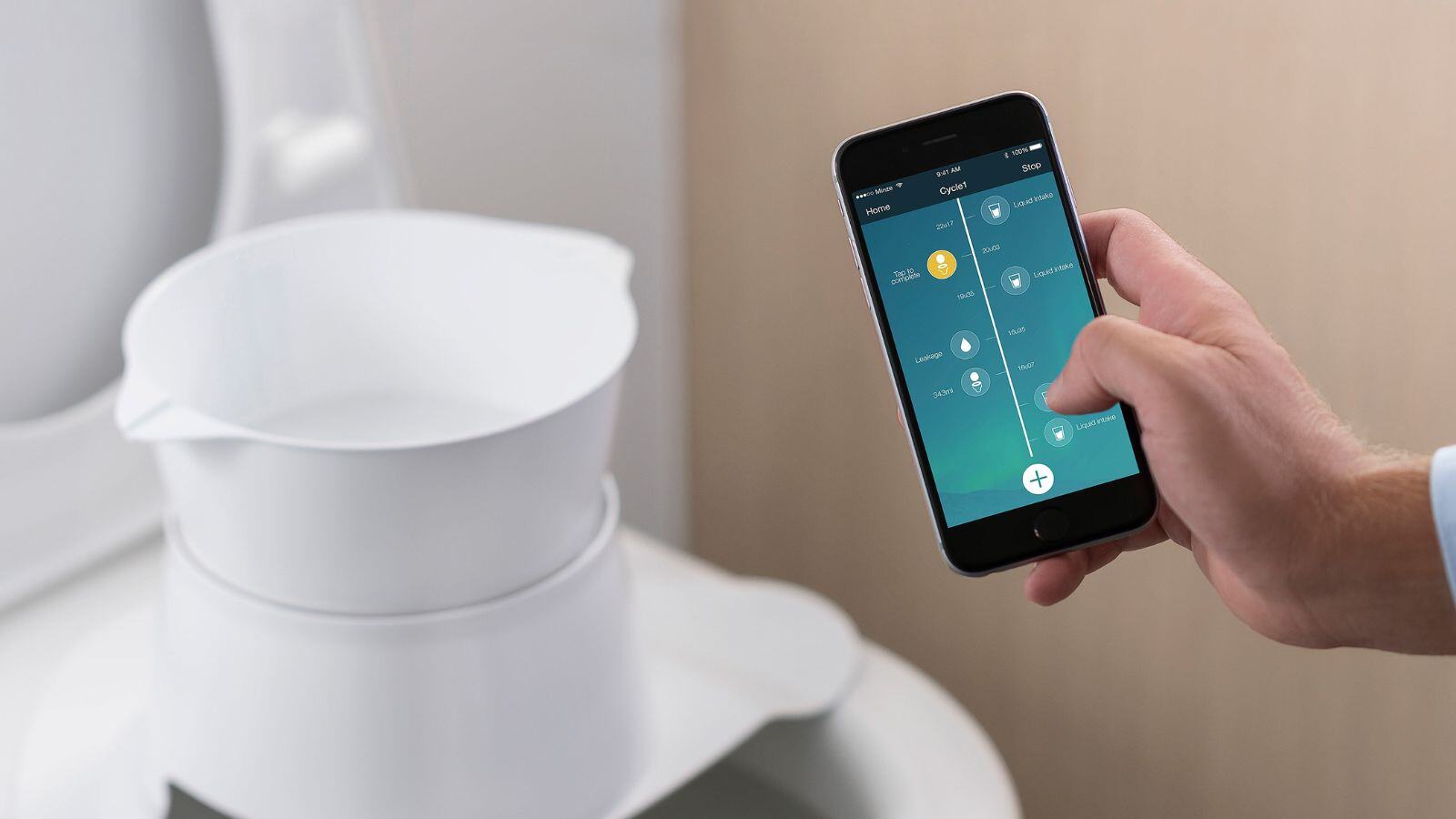.jpg?width=1600&height=900&name=Post-Market%20Clinical%20Follow-up%20-%20Clinical%20-%20QbD%20Group%20(4).jpg)
Post-Market Clinical Follow-Up (PMCF) for Medical Devices
Ensure Long-Term Safety and Compliance of Your Medical Device
Bringing a medical device to market is only the beginning. To maintain CE certification and ensure continued safety and performance, manufacturers must proactively monitor their devices in real-world use. That’s where Post-Market Clinical Follow-Up (PMCF) comes in.
At QbD Group, we help you navigate the complexities of PMCF with tailored, efficient, and MDR-compliant strategies that turn regulatory obligations into clinical and commercial value.
PMS vs. PMCF: what’s the difference?
Post-Market Surveillance (PMS)
The overarching process of collecting and analyzing data on device performance and safety once it’s on the market. It includes both reactive (e.g., complaint handling, vigilance) and proactive activities.
Post-Market Clinical Follow-Up (PMCF)
A proactive subset of PMS. It focuses specifically on gathering clinical data to confirm the device’s safety and performance over time, detect emerging risks, and ensure the benefit-risk profile remains favorable.
%20and%20Post-Market%20Clinical%20Follow-Up%20(PMCF)%20under%20the%20MDR%20ensuring%20safety%20and%20performance.png?width=540&height=300&name=Post-Market%20Surveillance%20(PMS)%20and%20Post-Market%20Clinical%20Follow-Up%20(PMCF)%20under%20the%20MDR%20ensuring%20safety%20and%20performance.png)
Supporting safety and performance across the lifecycle
From development to real-world use, your medical device must be backed by solid clinical evidence. Learn how PMCF ensures ongoing compliance, risk mitigation, and patient safety, both before and after market entry.
Pre-market
In the pre-market phase, collecting ample evidence to validate the safety and performance of your device is key.
That way you ensure the intended use of your device and the claims you prefer to make are supported by robust clinical data while mitigating associated risks as far as possible.
Post-market
In the post-market phase, additional PMS activities are crucial. PMS involves setting up mechanisms for the continuous collection of safety and performance data from the real-world use of your device.
PMS activities can be either reactive (e.g. vigilance, management of complaints), proactive (PMCF activities) or a combination of both.
PMS data help maintaining the continuous safety and performance profile of your device, ensuring that the benefits continue to outweigh the risks.
What is post-market clinical follow-up (PMCF)?
General Methods
Literature reviews
An ongoing review of published scientific literature is a core PMCF activity. It involves systematically analyzing publications related to the device or similar/equivalent devices to gather evidence of safety, performance, and identify emerging risks or adverse events. This review is the minimum required PMCF activity for all devices, regardless of risk class, and should ideally be conducted and documented annually.
Literature research is efficient, requiring few resources and being simple to complete. It can leverage existing publications on equivalent or popular devices to support clinical evaluation, making it especially useful for manufacturers with limited access to clinical sites or patient data.
However, it has limitations. Using data from equivalent devices often requires access to underlying clinical data, which may not be publicly available. This can necessitate contracts with authors or manufacturers, reducing its practicality as a standalone PMCF activity—particularly for higher-risk devices or when detailed outcomes are needed.
Despite these challenges, literature research remains a valuable and cost-effective PMCF tool, especially when combined with other activities in a comprehensive post-market surveillance strategy.
User feedback
Its main advantages include low resource requirements, ease of implementation, and the ability to capture qualitative data, especially for usability issues. It’s particularly useful for lower-risk devices or as a complementary activity.
However, to be valid, feedback must be scientifically sound, with clear objectives and unbiased methods. Using data from equivalent devices can be challenging due to limited access to underlying clinical data, sometimes requiring contracts with authors or manufacturers. Despite these limitations, user feedback remains a valuable part of a well-rounded PMCF strategy.
Case reports
When planned and documented in the PMCF plan, case reports offer valuable insights into device performance, safety, and usability. They are useful for identifying rare complications, confirming known risks, and supporting benefit-risk assessments. They also help maintain engagement with physicians and key opinion leaders.
However, case reports have limitations. They are best suited for simple datasets over short periods and may not be appropriate for higher-risk or Class III devices needing long-term follow-up. Their observational nature can limit scientific rigor and standardization, affecting regulatory acceptance. To be valid under MDR, they must be collected proactively with clear objectives, methods, and analysis. Their success also depends on clinician motivation, which can be hard to sustain without incentives.
While not a substitute for formal clinical investigations, case reports can meaningfully support clinical evaluation when used appropriately and alongside other PMCF activities.
Safety database searches
These searches are efficient and low-cost, requiring fewer resources than clinical studies. They are useful for spotting trends across large populations and benchmarking against similar devices.
However, limitations exist. Public database entries often lack clinical detail, and using data from equivalent devices can be difficult without access to underlying clinical data. This may require agreements with authors or manufacturers, complicating regulatory use.
Despite these challenges, safety database searches remain a valuable and cost-effective PMCF tool, especially when combined with other surveillance activities.
Specific Methods
PMCF surveys
Surveys are generally less costly and easier to implement than clinical studies. They can be distributed electronically or on paper and tailored to specific clinical questions, making them especially useful for lower-risk devices or as a complementary PMCF activity. Patient-focused surveys collect data on patient experiences and outcomes and, when designed to prospectively capture clinical and patient-reported outcomes, can be considered high-quality clinical data (rank 4). These require careful attention to consent, ethics, and GDPR compliance.
User surveys, typically completed by healthcare professionals or lay users, focus more on device experience and occasional deficiencies. While valuable, they tend to yield lower-quality data due to their retrospective nature and limited focus on clinical outcomes.
Despite their advantages, surveys come with challenges. Access to end-users may be restricted, especially when distributors act as intermediaries. Surveys must be scientifically sound, with clear objectives, unbiased questions, and appropriate sampling. Poor design or overly complex formats can lead to low response rates and unreliable data. Additionally, using feedback on equivalent devices may require access to supporting clinical data, which is not always publicly available and may involve agreements with other parties.
To ensure meaningful results, surveys should be statistically designed with a focused scope. Involving experienced PMCF survey designers is essential for successful implementation and regulatory acceptance.
PMCF cohort studies
These studies offer high-quality, device-specific data and allow for longitudinal follow-up, helping detect delayed complications and support clinical evaluation updates. They are especially valuable when designed with clear endpoints and robust methodology.
However, cohort studies are resource-intensive, requiring planning, coordination, and long-term patient follow-up. Recruitment and retention can be challenging, and the cost and time involved may limit feasibility for smaller manufacturers or lower-risk devices. Regulatory demands for data quality and ethics approval add complexity.
Despite these challenges, cohort studies are a powerful PMCF tool, especially when used to address specific safety or performance questions that simpler methods cannot resolve.
Investigator-initiated studies
A major advantage of IIS is their ability to provide valuable clinical evidence at relatively low cost to the manufacturer. Since investigators typically manage the study design, funding, and execution, manufacturers may access high-quality data without bearing the full burden. IIS can also reveal new clinical insights, support broader use, and strengthen relationships with key opinion leaders.
However, manufacturers have limited control over study design, endpoints, and data quality, which may affect regulatory acceptance. Without formal agreements, access to full datasets may be restricted, limiting their use in clinical evaluation. IIS are also not sufficient as a standalone PMCF activity unless they align with the PMCF plan and meet MDR standards for scientific rigor and traceability.
In summary, IIS can be a valuable addition to a PMCF strategy—especially for external clinical evidence—but should be combined with other activities to ensure full MDR compliance.
PMCF registries and interventional studies
Registries systematically collect real-world data from patients using a device, often across multiple sites and over time. They are valuable for tracking long-term safety, identifying rare adverse events, and supporting real-world effectiveness. Registries enable large-scale data collection without the complexity of formal trials, benefiting both manufacturers and regulators.
Interventional studies are formal clinical investigations where the device is used in a controlled setting with predefined endpoints. These studies provide high-quality, prospective data and are essential when observational methods can’t answer specific safety or performance questions.
Both approaches generate high-quality, device-specific data, support regulatory submissions, and help update clinical evaluations. They also enhance clinical credibility and foster collaboration with healthcare professionals.
However, they are resource-intensive, requiring planning, coordination, and funding. Challenges include patient recruitment, data standardization, long-term follow-up, and navigating ethical, privacy, and regulatory requirements. Registries may face data consistency issues, while interventional studies can be delayed by their rigorous design.
In summary, PMCF registries and interventional studies are essential for generating meaningful clinical evidence, particularly for higher-risk devices. Though demanding, they are critical for ensuring long-term safety and performance under the EU MDR.
What does QbD Group offer?
QbD Group provides end-to-end PMCF support, from strategy to execution. We help you choose the most efficient and compliant path forward, whether that’s a literature review, a targeted survey, or a full PMCF study.
Strategic planning
Medical writing
Clinical operations
Data collection
Regulatory expertise
Why QbD Group?
Our team is well-equipped to support you in designing and executing various PMCF activities, tailored to their specific regulatory requirements and your device characteristics.
QbD Group is your trusted partner in life sciences, with:- 700+ experts across Europe, the US, and Latin America.
- Deep EU MDR and IVDR expertise.
- Proven track record in clinical strategy, medical writing, and regulatory submissions.
- A pragmatic, cost-effective approach to PMCF and PMS.
- Access to a Medical Advisory Board of experienced clinicians and regulatory experts.
- A “first-time-right” mindset to help you avoid costly delays and non-compliance.
We don’t just help you meet regulatory requirements, we help you turn PMCF into a strategic advantage.

Resources








.jpg)










.png?width=109&height=108&name=Pharma%20(2).png)
.png?width=111&height=108&name=Medical%20Devices%20(2).png)
.png?width=84&height=107&name=IVD%20(2).png)


